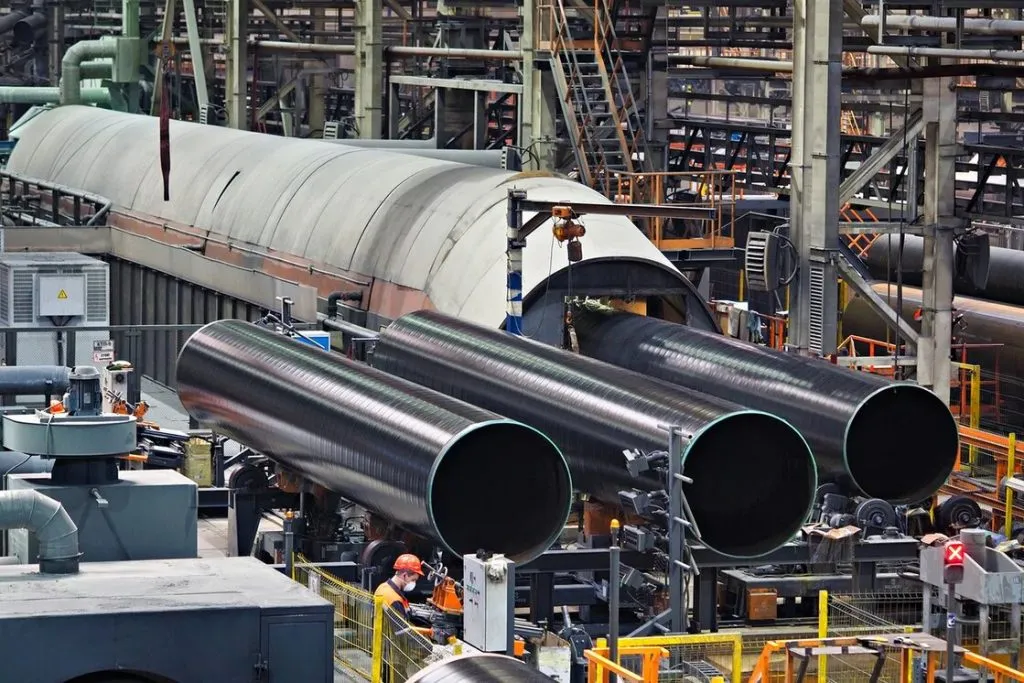Diameters of steel pipes: external and internal
Pipes and various types of pipeline are actively used in a wide variety of sectors of the economy. For example, in construction, when they are used in the arrangement of pile foundations. Here, the main requirement is strength, and it is determined not only by the brand of steel and the method of manufacture, but also by the geometric dimensions of a large diameter pipe, its length, directly with the diameter and thickness of the wall.
But still the main "consumer" of pipe products is a variety of pipeline systems. Raw materials obtained at the deposits are transported through the pipes, water, gas and heat are brought to the pipes to residential buildings and enterprises, and various “spent materials” are allocated through the pipes.
The composition of the pipeline network includes systems that perform various important functions: pumping equipment, pressure regulators, tanks and drives, distribution points. For calculation & nbsp; The general functionality of the entire network determining the value is geometric characteristics.
The correct selection of pipes provides full work, errors lead to violations. The use of smaller pipes and, as a result that have less throughput, leads to excess of standard pressure and the possible failure of the equipment. The use of pipes is greater than the diameter provided by the project leads to a drop in the pressure and increased load on the pumping equipment.
The main characteristics of the pipes in the regulatory documentation are the following:
- Outside diameter.
- Inner diameter.
- The thickness of the wall.
- the ratio of external and internal diameters.
- Length of the product.
The adopted regulatory documents use the following designations:
DN - nominal diameter, indicated in millimeters. The value is used by pi selection of dimensions of the attached elements. The nominal diameter is approximately equal to the "conditional pass".
DU - conditional passage. In fact, this is the average clearance corresponding to the parameters of the reinforcement. Depending on the accuracy class, various deviations from the ovality and straightforwardness of the product are allowed.
Dnb & nbsp; - external pipe diameter
S is the thickness of the wall, indicated in millimeters. Pipes of equal diameter can have different wall thicknesses. Thin -walled and thick -walled pipes are designed for different pressure.
RU, RPR, PP - conditional pressure, trial (testing), working.
Classification of steel pipes in diameter
The larger the diameter of the pipe, the higher its “throughput”. Depending on the area of the section, the pipes are traditionally divided into small (10 - 108 mm), medium (114 - 530 mm) and large diameter pipes, from 530 mm and higher.
Small diameters pipes are used for communications equipment in buildings and structures. City engineering networks require medium diameter. The main "workplace" of large diameter pipes is trunk pipelines. Naturally, products and other types are used in auxiliary areas, depending on the purpose. Also, pipes of large diameters work effectively in construction, mechanical engineering, or, for example, during the construction of ventilation systems.
Standard designations of the diameter of the pipes
The generally accepted standard of internal diameter of steel pipes is the following number of values: 6, 10, 15, 20, 25, 32, 40, 50, 65, 80, 110 millimeters (and further with an increasing “step”). In this case, in some cases, the conditional passage of the pipe is indicated in inches (1 inch = 2.54 cm). When transferring values to the metric system, the value is rounded up to the nearest value from the given standard row.
You can familiarize yourself with the possible options for pipe products on the example of a variety produced by the Zagorsky Pipe Plant.
Direct steel electric welding pipes for trunk oil pipelines
This type of product & nbsp; large diameter can have an external diameter in the range from & nbsp; 530 to 1220 mm, while the wall thickness varies from 8 to 35 mm, and the length is up to 12.2 meters. These products, depending on the dimensions, can withstand operating pressure up to 11.8 MPa, are produced in two types: ordinary and declining. The second type, of course, is designed to work in the most severe climatic conditions.
Steel pipes welded for main gas pipelines, oil pipeline and transportation of oil refining products
This type of product is produced in accordance with GOST 31447-2021, in the diameter range from 530 to 1220 mm and wall thickness 8-35 mm. The length of the products is up to 12.2 meters.
Pipes steel electric welding general purposes.
It is produced according to GOST 10706-76, with diameters of 530-1420 mm, wall thickness 8-35 mm, length up to 12.2 meters.
Also, the production of other steel products is constantly increasing at the Zagorsky Pipe Plant. Among its regular buyers of Gazprom, Rosatom, Rosneft, Novatek, and Federal State Unitary Enterprise Rosmorport. Work with the best transport companies guarantees the rapid delivery of products of the metallurgists near Moscow to anywhere in Russia.


